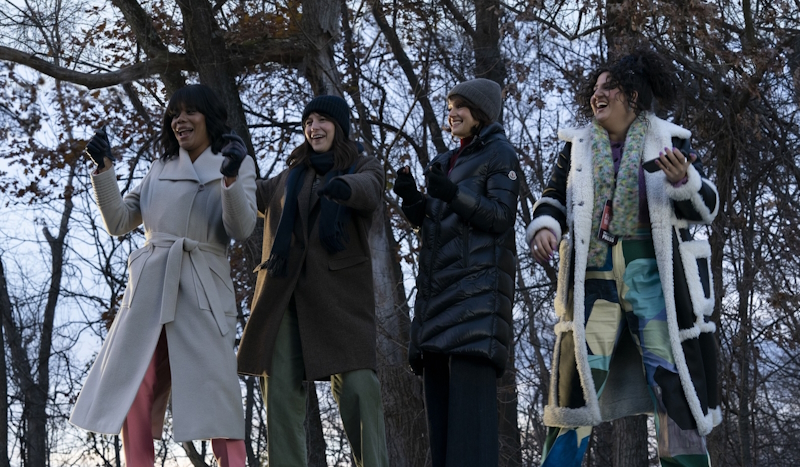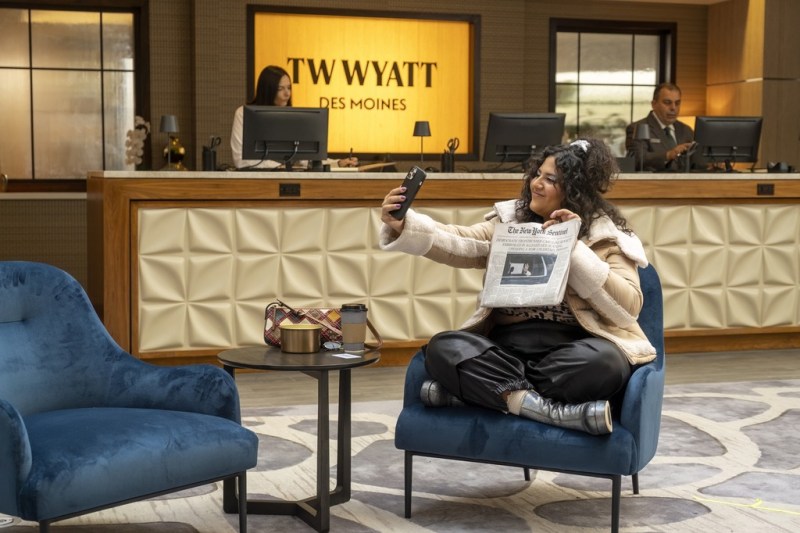My first big campaign trip was to Iowa, back when the Iowa caucuses were still a thing. The presidential candidate I was supporting sent out a call for volunteers to join the campaign on the ground and I jumped at the opportunity. It wasn’t my first foray into politics — I’d knocked on doors for my Congressman, I’d worked with the City Council — but this felt different…the stakes felt so much higher. And so, one early winter morning, I joined a van full of strangers to make the nearly 20 hour drive to Ames, Iowa.
I spent the bulk of the van ride studying. The campaign’s state director had warned us: Iowa voters are built differently. They won’t just take your campaign literature and let you move on to the next house, he explained, they invite you inside, offer you a drink, and pepper you with questions about your candidate. You had to be ready, he told us, so I made sure I was: reading each one of my candidate’s position papers, rehearsing my doorstep pitch, and quizzing the strangers who quickly became friends. By the time we arrived, we all probably knew our candidate’s platform better than they did.
The days leading up to the caucus were a blur: a continuous cycle of door-knocking, candidate events, and phone banking, interrupted only by brief naps on the floor of a supporter’s apartment, and fueled by copious amounts of caffeine and whatever food supporters dropped off at headquarters. Celebrities would show up to serve as surrogates and the breakneck pace of the campaign didn’t afford me time to fangirl. Emotions were heightened and bonds were formed in the Iowa permafrost.
I fell in love with democracy on the streets of Iowa.

That experience primed me to feel a particular kinship with Sadie McCarthy (Melissa Benoist), the lead character in the new Max political drama, The Girls on the Bus. During the last presidential cycle, while covering the Hillary-like candidate (Hettienne Park’s Felicity Walker) as a journalist for the fictional New York Sentinel, Sadie found herself enamored, with democracy, with the candidate she was covering, and with the possibility that Walker would become the nation’s first female president. But after the candidate’s loss, Sadie’s reaction is caught on camera, she’s turned into a meme, and it goes viral, nearly derailing Sadie’s career.
It’s only through the magnanimity of her editor, Bruce — an editor who’s oblivious to her inappropriate relationship with a campaign staffer — that she’s able to reclaim her seat on the frontrunner’s bus. She reconnects with Grace (Carla Gugino), a wily veteran of the political press corps who, in an effort to outdo her father, prioritizes breaking stories over her family. Sadie’s joined on the bus by two newcomers: Kimberlyn (Christina Elmore) and Lola (Natasha Behnam). Kimberlyn is working to build her career as the lone black conservative voice on a Newsmax-esque network while Lola invites political neophytes into the campaign via social media. As part of the press corps, they’re all in competition with each other…the race to get the next scoop or interview the candidates…slowly but surely, they find a supportive sisterhood with each other instead.
The Girls on the Bus works best when it focuses on the women and their relationships with each other. Sadie’s optimism balances out Carla’s cynicism, Kimberlyn’s conservatism is challenged by Lola’s socialism. They’re different but they all remain open to learning from one another. Each of them boards the bus with relatable problems that help bridge the gaps on their political differences. Grace struggles to connect with her college-age daughter, even as she takes on a maternal role within the group. Kimberlyn struggles with finding time to plan the wedding and life that she and her fiancé (and her fiancé’s mother) have always said they wanted.

It’s Lola that intrigues me the most. At first, she feels like a bit of a caricature…this queer, body positive Instagram influencer who lectures others on their use of pronouns and asserts that gender is just a construct (much to Grace’s chagrin). She’s unapologetic about her politics and, while everyone else hides their biases, Lola’s candid about hers: she’s supporting the thinly concealed Alexandria Ocasio-Cortez knock-off (AKA “the freshman,” played by Legends of Tomorrow alum, Tala Ashe). Lola arrives on the bus with, perhaps, the largest following of them all.
But just when you think you’ve got Lola figured out, the show deepens her characterization. Lola is the survivor of a mass shooting. She carries the scars of that day, just beneath the surface, and an ill-timed article about her exposes the rawness to the world. Beneath Lola’s confidence and bravado is a scared girl who had to listen to her friends die and found this unearned fame that she desperately wants to shed.
Her seat on the bus — paid for by shilling for flavored liquors, and CBD gummies (in one of my favorite recurring bits of the series) — is her attempt at reinvention. She struggles at first: showing up for press pool duty in a bikini — convinced they were going to an actual pool — and having an inappropriate relationship with a member of the Freshman’s staff (played by nonbinary actor, Terry Hu). But the more time that Lola spends with Sadie, Grace, and Kimberlyn, the more she wants to not just do this but do this well. Though the space in which she ultimately ends up feels implausible, watching Lola grow over the show’s ten episodes is a highlight of the season.
If that was the extent of the show — if Girls on the Bus was a workplace drama featuring these four characters — played by these four engaging actresses — then I’d tell you, without reservation, to watch it. I really enjoyed that aspect of the show. But the rest is, admittedly, a letdown. Its efforts to showcase journalism and the political landscape fall flat.
While the girls’ varying mediums — Sadie and Grace’s legacy media vs. Kimberlyn and Lola’s new media — could’ve easily set up a debate about the future of journalism, the show seems content instead to look backwards. Sadie clings to her copy of 1973’s The Boys on the Bus like it’s a Bible and reveres Hunter S. Thompson so much that his ghost haunts her, offering Sadie advice and support when she needs it. Why is this show so nostalgic for an era that would’ve excluded the very women it features?
The other depictions of journalism are equally as jarring: the improper relationships with sources, Sadie’s editor, Bruce, repeating one ridiculous platitude after another or Bruce urging Sadie to get the sentimentality out of her writing, while embracing her gonzo style of journalism (a la Hunter S. Thompson) when she submits it anyway. Rather than doing the hard legwork of chasing down leads, the tips that threaten to upend the entire Democratic primary just fall into Sadie’s lap. It’s hard to imagine this milquetoast version of political journalism inspiring anyone, particularly women, to follow that path.
There are those for whom Girls on the Bus‘ politics will be fine. Those who are overwhelmed by the political moment that we find ourselves in, will be pleased to know that this show can still be an escapist watch. Light fare is a perfectly acceptable form of entertainment, but Girls on the Bus can’t be light and also introduce a plot to save democracy in its back half and expect it to be taken seriously. It can’t both evoke the Steele dossier and pretend that the calamity that is Trumpism hasn’t infested our politics. The show undermines its own storytelling.
To the extent that The Girls on the Bus is worth watching, it’s on the back of its four co-stars. They are eminently watchable and elevate what is otherwise a middling script.
The Girls on the Bus is now streaming on Max.



Thank you for this review.
Thanks Natalie. I was curious about this show for sure.
“the thinly concealed Alexandria Ocasio-Cortez knock-off (AKA “the freshman,” played by Legends of Tomorrow alum, Tala Ashe)”
Perhaps the sexiest combination of words in the English language. To me. Probably not to normal people.
Halfway through episode 2 and everything you said is completely correct. Not sure why they decided on the political slant when they so clearly aren’t invested. I wish the cast was in a better show—Supergirl as the lead is super charming!!—because they’re great but the show is just well produced nothing.